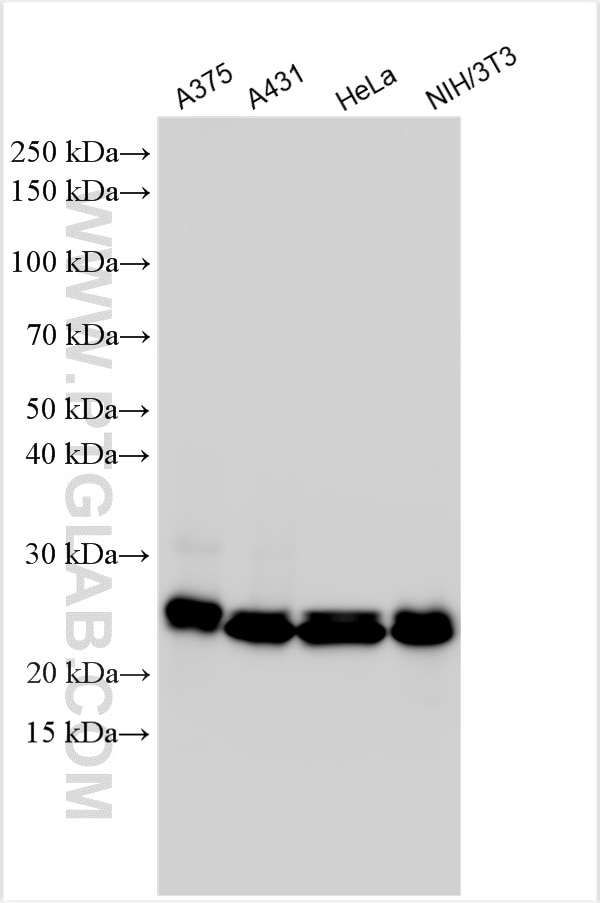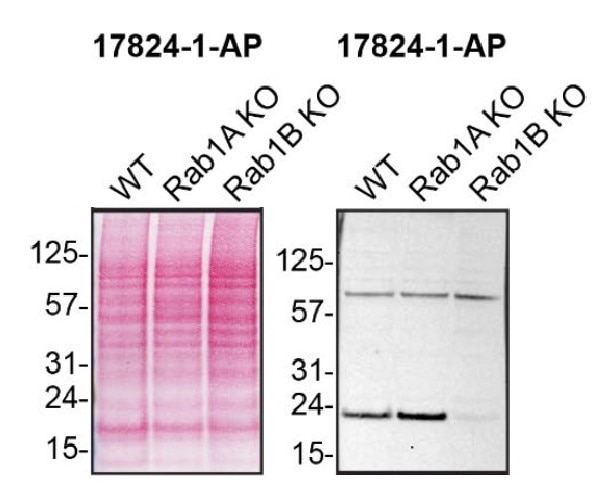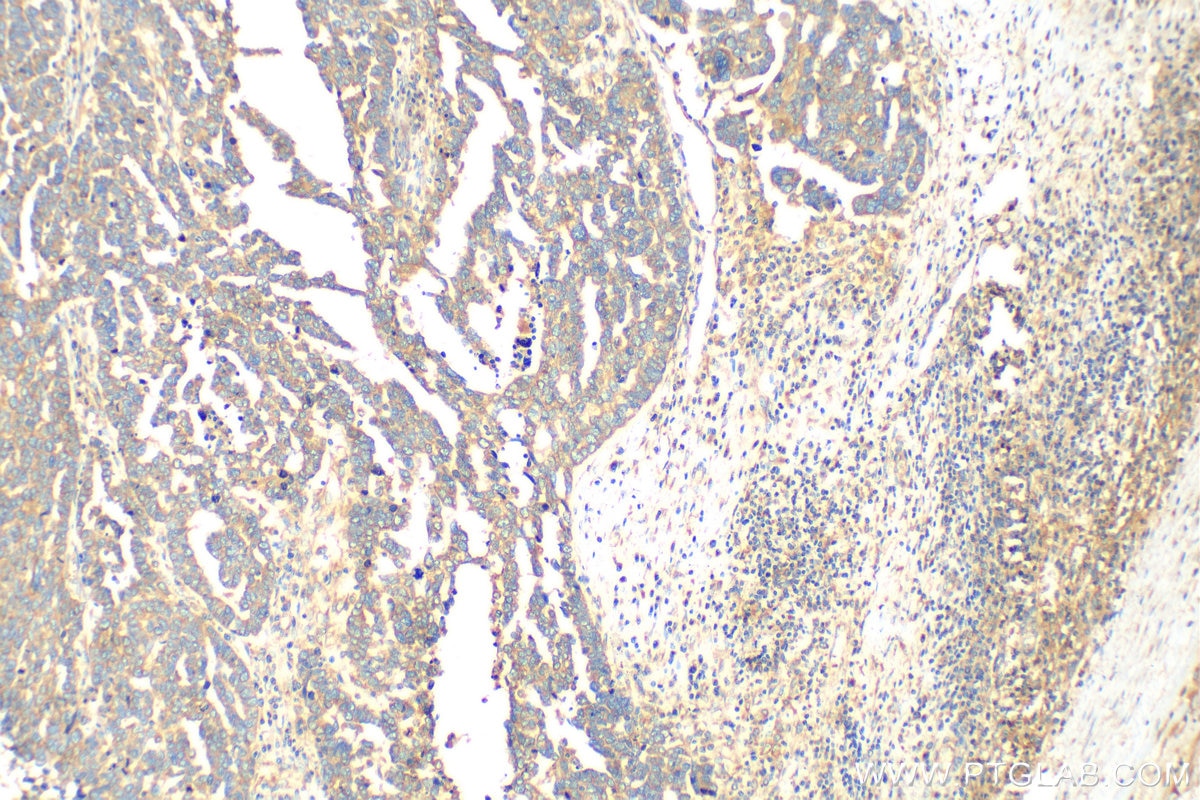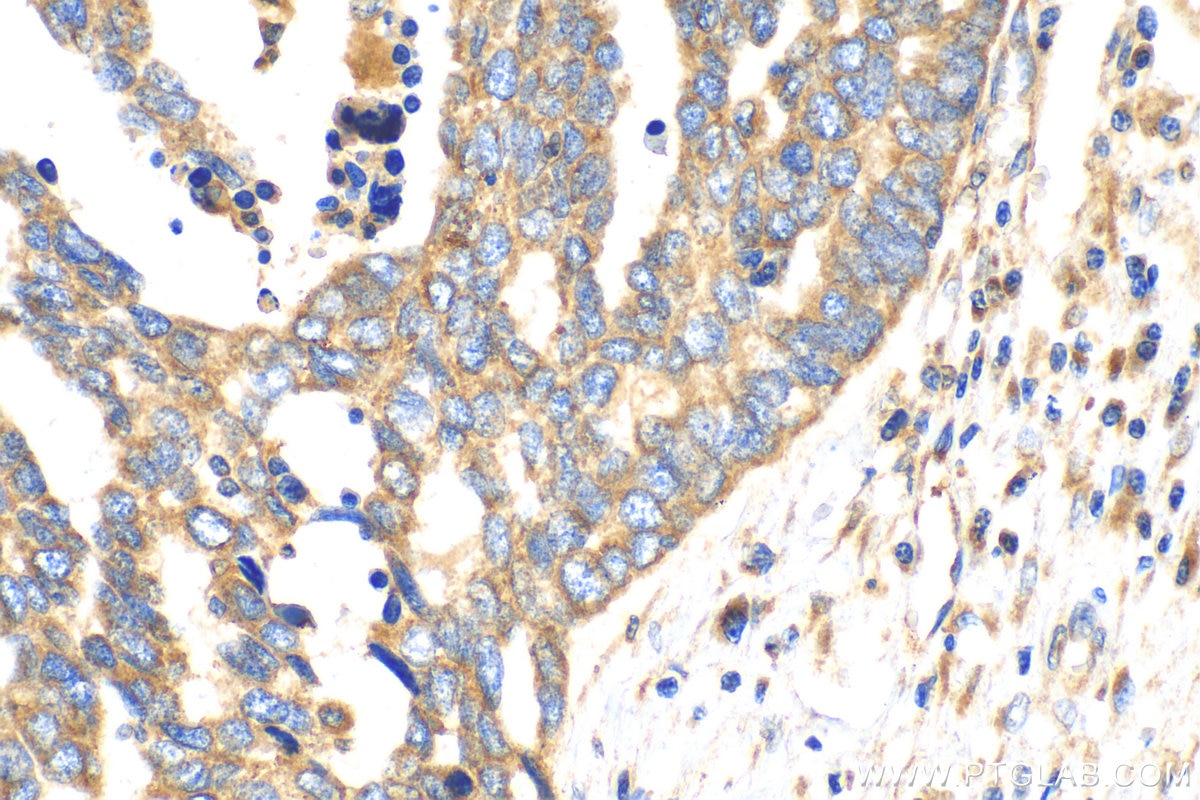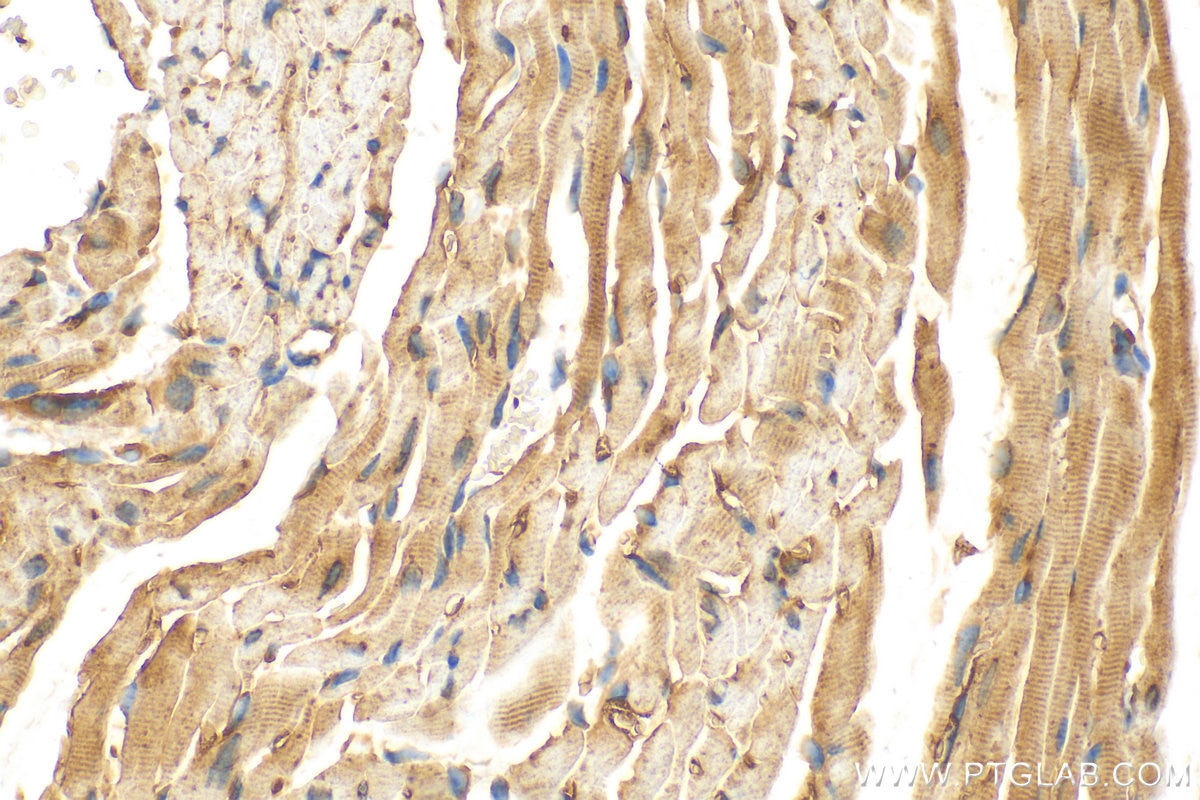Tested Applications
| Positive WB detected in | A375 cells, HeLa cells, HAP1, A431 cells, NIH/3T3 cells |
| Positive IHC detected in | human heart tissue, mouse heart tissue, human ovary tumor tissue Note: suggested antigen retrieval with TE buffer pH 9.0; (*) Alternatively, antigen retrieval may be performed with citrate buffer pH 6.0 |
| Positive IF/ICC detected in | HeLa cells, NIH/3T3 cells |
Recommended dilution
| Application | Dilution |
|---|---|
| Western Blot (WB) | WB : 1:1000-1:6000 |
| Immunohistochemistry (IHC) | IHC : 1:50-1:500 |
| Immunofluorescence (IF)/ICC | IF/ICC : 1:200-1:800 |
| It is recommended that this reagent should be titrated in each testing system to obtain optimal results. | |
| Sample-dependent, Check data in validation data gallery. | |
Published Applications
| KD/KO | See 3 publications below |
| WB | See 12 publications below |
| IHC | See 1 publications below |
| IF | See 5 publications below |
| IP | See 1 publications below |
| CoIP | See 1 publications below |
Product Information
17824-1-AP targets RAB1B in WB, IHC, IF/ICC, IP, CoIP, ELISA applications and shows reactivity with human, mouse samples.
| Tested Reactivity | human, mouse |
| Cited Reactivity | human, mouse, rat, pig, monkey |
| Host / Isotype | Rabbit / IgG |
| Class | Polyclonal |
| Type | Antibody |
| Immunogen | RAB1B fusion protein Ag12197 Predict reactive species |
| Full Name | RAB1B, member RAS oncogene family |
| Calculated Molecular Weight | 201 aa, 22 kDa |
| Observed Molecular Weight | 22-25 kDa |
| GenBank Accession Number | BC071169 |
| Gene Symbol | RAB1B |
| Gene ID (NCBI) | 81876 |
| RRID | AB_2237881 |
| Conjugate | Unconjugated |
| Form | Liquid |
| Purification Method | Antigen affinity purification |
| UNIPROT ID | Q9H0U4 |
| Storage Buffer | PBS with 0.02% sodium azide and 50% glycerol , pH 7.3 |
| Storage Conditions | Store at -20°C. Stable for one year after shipment. Aliquoting is unnecessary for -20oC storage. 20ul sizes contain 0.1% BSA. |
Background Information
Ras-related protein Rab-1B (RAB1B) belongs to the small GTPase superfamily and Rab family. Rab1b, a GTPase regulating secretory transport, was recently associated with targeting proteins to LDs in a Drosophila RNAi screen. Rab1b recruits lipid-synthesizing enzymes, facilitating Lipid droplets (LDs) growth. The small GTPase Rab1b interacts with diacylglycerol acyltransferase 2 to facilitate its targeting to the surface of lipid droplets (PMID: 38809969). Rab1b, an extensively studied and established master regulator of ER-to-Golgi transport. The mechanism of Rab1b's function is to promote ER to LD surface targeting of those triglyceride-synthesizing enzymes that can associate with the unique lipid monolayer comprising the LD surface (PMID: 38809969). Rab1b is a regulatory protein involved in both COPI and COPII transport (PMID: 17429068).
Protocols
| Product Specific Protocols | |
|---|---|
| WB protocol for RAB1B antibody 17824-1-AP | Download protocol |
| IHC protocol for RAB1B antibody 17824-1-AP | Download protocol |
| IF protocol for RAB1B antibody 17824-1-AP | Download protocol |
| Standard Protocols | |
|---|---|
| Click here to view our Standard Protocols |
Publications
| Species | Application | Title |
|---|---|---|
Nat Cell Biol A dual role of ERGIC-localized Rabs in TMED10-mediated unconventional protein secretion
| ||
Nat Cell Biol A CREB3-ARF4 signalling pathway mediates the response to Golgi stress and susceptibility to pathogens. | ||
Proc Natl Acad Sci U S A Vibrio MARTX toxin processing and degradation of cellular Rab GTPases by the cytotoxic effector Makes Caterpillars Floppy | ||
Aging (Albany NY) Overexpression of Rab1B and MMP9 predicts poor survival and good response to chemotherapy in patients with colorectal cancer. |
